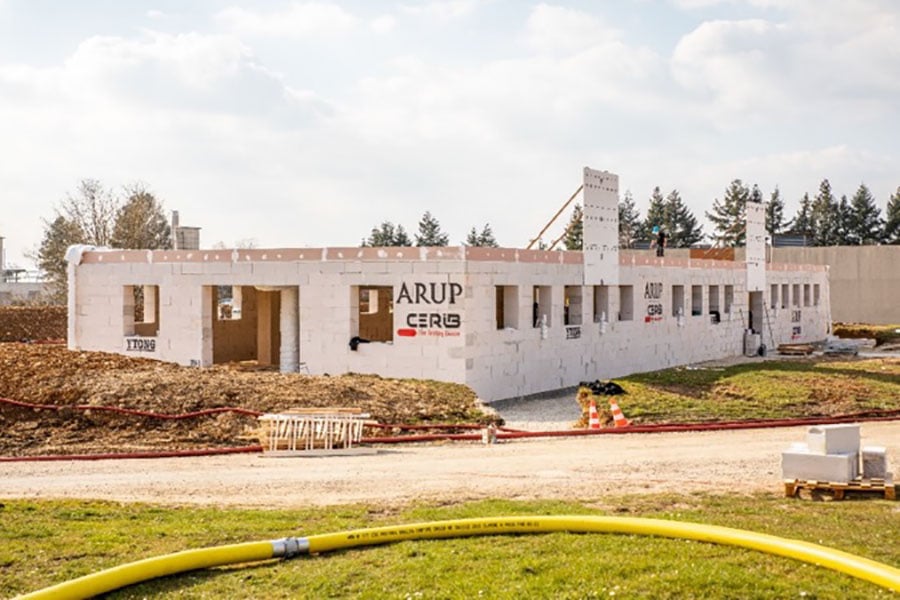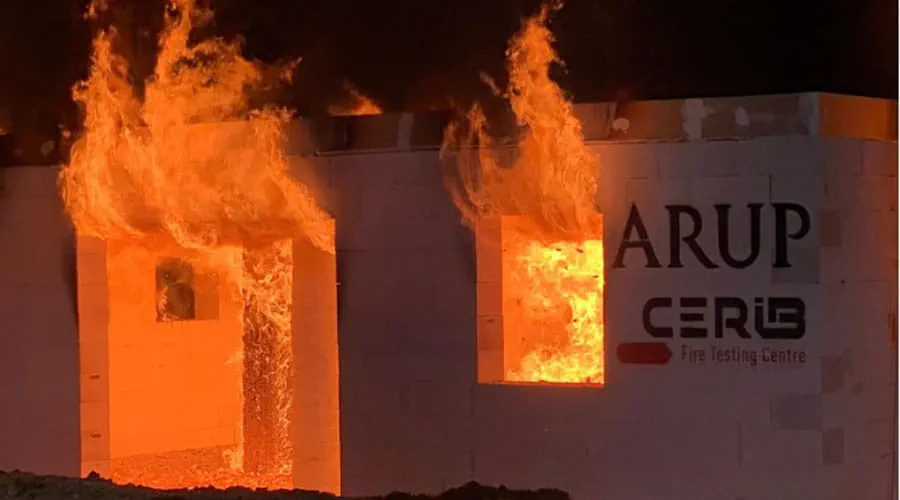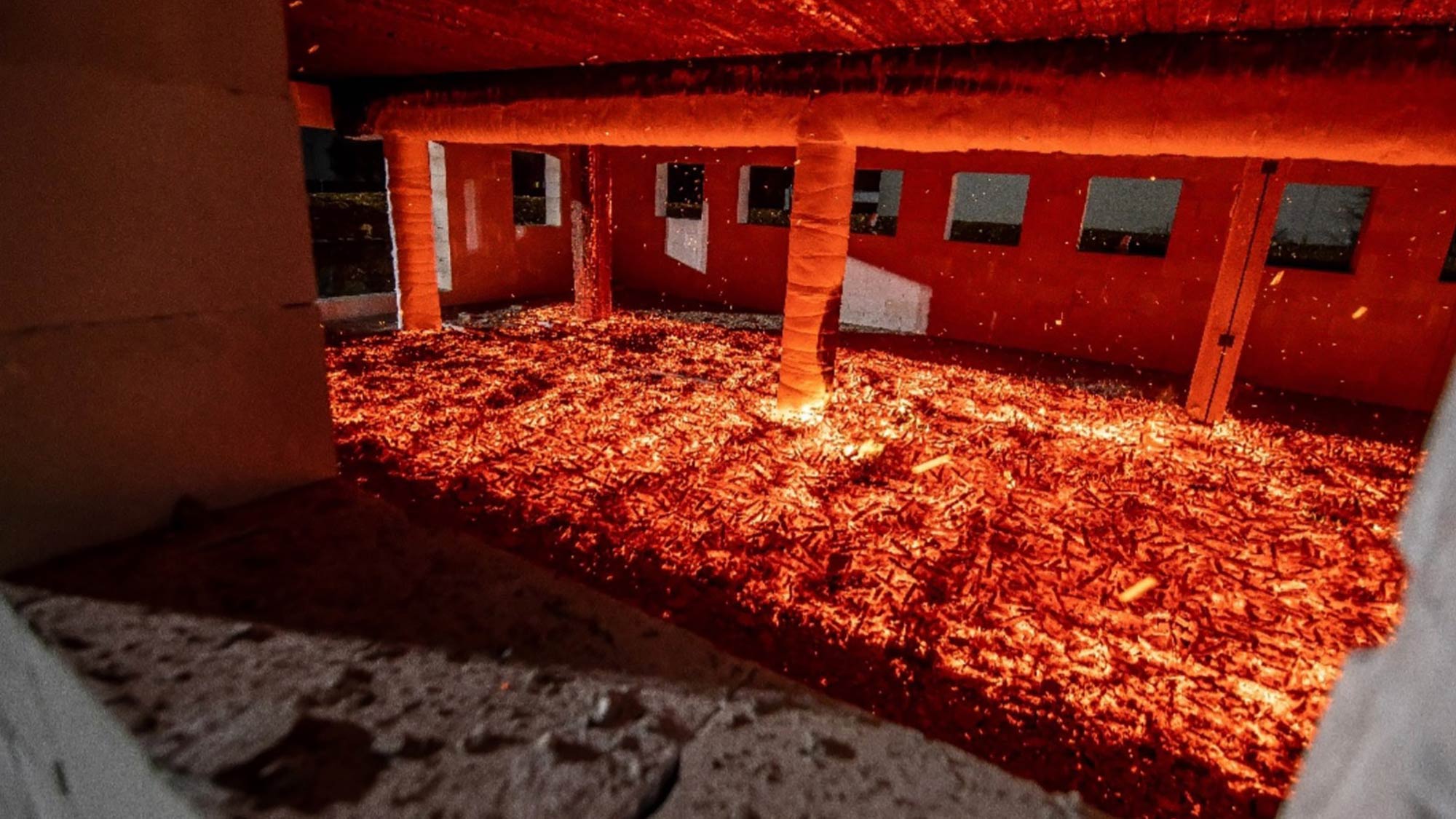This article was amended in November 2022 to reflect the completion of the large scale fire experimental series.
The environmental impact of construction is unsustainable in our warming world. Faced with the high carbon footprint of concrete and steel production, timber is becoming a compelling third option. Properly managed over its lifecycle, timber is a natural way to lock up carbon and unlock sustainable design. But as architects and engineers explore the speed, quality and human appeal of this sustainable material for larger and taller structures, fire safety standards and codes are yet to evolve to support low embodied carbon structures.
We are contributing to the growing body of knowledge by testing the fire performance of timber and sharing our insights as we all work to develop a safe, low-carbon future for buildings.
Testing resilience, at scale.
Cross-Laminated Timber (CLT) and glulam are the most affordable, efficient and flexible form of timber used for construction. Previous fire performance tests for these materials have focussed on structures under 90m2, the equivalent of an eight-person office. If timber is to make a full contribution to sustainable design for offices, educational and residential buildings, we need to consider its performance in much larger compartments.
Our fire safety team has been working at CERIB – a professional fire test facility in France – on a series of full-scale fire experiments using a 380m2 combustible compartment, with input from Hazelab at Imperial College London. That size of compartment represents an office of approximately 40 people.
The experimental series comprised four experiments, with the first occurring on 10 March 2021, concluding with the fourth experiment on 14 December 2021. We were joined at CERIB by observers from the French Fire Prevention department and the Paris Fire Brigade.
The design of the building at CERIB allowed us to vary both fuel load and ventilation to more fully understand how timber performs in a fire as we deconstruct, rebuild and re-instrument the structure.

Early observations from the experiments
To study how fires grow and develop in these larger spaces formed with exposed mass timber, we incorporated extensive instrumentation to measure temperatures and heat flux inside the building and within the CLT and glulam columns themselves. Together with cameras, this allowed us to monitor and measure fire spread, speed, duration and – with no firefighting intervention – the longterm fire decay and smouldering behaviour of CLT.
Two experiments investigated the effectiveness of protective features on the fire performance, namely an automatic low pressure water mist suppression system (third experiment) and partial encapsulation of the CLT (fourth experiment).
The spread of fire across the exposed CLT ceiling was faster than current estimates would predict, an important insight for the design of evacuation options and fire-fighting response. Once the fuel in cribs on the floor had been consumed and only glowing embers remained, the flaming combustion on the surface of the CLT panels also reduced, though small pockets continued to smoulder for a significant number of hours.
The automatic suppression system was effective in controlling the fire so that CLT panels did not become involved in the fire; while the encapsulation helped to slow the fire spread compared to unprotected CLT.
We are using these results to drive our numerical modelling of the fire behaviour of exposed timber, and to inform the development of innovative low carbon hybrid structural floor systems.

Shared insight
With the four experiments now completed and results already published in peer reviewed journals, we are looking to apply this work to inform future evacuation, structural design and fire-fighting planning.
Properly understood and incorporated into new codes and guidance, we hope this work will contribute to the robust use of sustainable mass timber in buildings around the world.
Download a summary of our four fire experiments at the CERIB Fire Test facility
 ;
;
